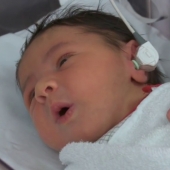Miscarriage is medically referred to as spontaneous abortion, which is a term that refers to naturally occurring events and not to a medical or surgical abortion. Miscarriage is also known as early pregnancy loss.
The most common symptom of a miscarriage is vaginal bleeding. This can vary from light spotting or brownish discharge to heavy bleeding and bright red blood. The bleeding may come and go over several days. However, light vaginal bleeding is relatively common during the first trimester of pregnancy (the first 12 weeks) and does not necessarily indicate a miscarriage.
Bleeding during pregnancy may be referred to as a threatened miscarriage. Of women who seek clinical treatment for bleeding during pregnancy, about half will miscarry. Symptoms other than bleeding are not statistically related.
Miscarriage may be detected during an ultrasound exam, or through serial human chorionic gonadotropin (HCG) testing. Women pregnant from assisted reproductive technology methods, and women with a history of miscarriage, may be monitored closely and so detection is sooner than women without such monitoring.
It is estimated about half of early miscarriages will be fully expelled naturally. Several medical options exist for managing documented nonviable pregnancies that have not been expelled naturally, such as medicinal treatment or a dilation and curettage (D&C) procedure. An ERPC, or evacuation of retained products of conception, may be performed to remove the remains of a pregnancy and the placental tissue from the uterus.
The most common signs of miscarriage include:
- Vaginal bleeding
- Cramping:
- Loss of pregnancy symptoms
- Lower back pain
- Abdominal pain
- Vaginal pressure or low pelvic pressure
- Labor contractions
- 60 views













